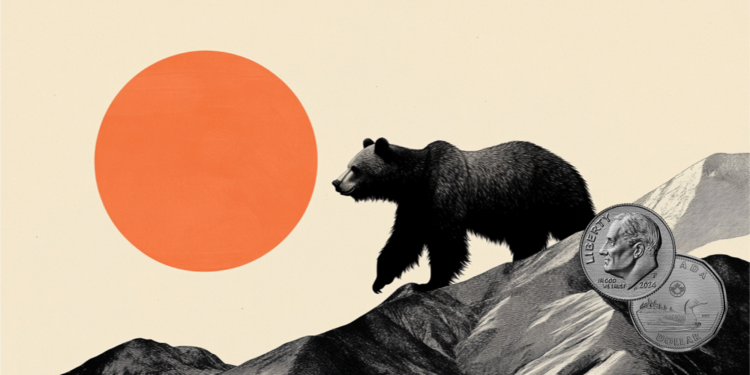- The Canadian Dollar found a new eight-month peak against the US Dollar on Wednesday.
- The BoC held rates steady at its latest interest rate decision, giving the Loonie a boost.
- Global markets await the next episode in Donald Trump’s tariff and trade wars, limiting Greenback flows.
The Canadian Dollar caught a rally on Wednesday, bolstered by a rate hold from the Bank of Canada (BoC) following an accelerated string of rate cuts. Broad-market investor sentiment remains pinned on the low side after a disappointing US ADP jobs data print, hobbling the US Dollar. Traders are buckling down for the wait to Friday’s official US Nonfarm Payrolls (NFP) jobs package before making any rash decisions.
BoC Governor Tiff Macklem reiterated that the Canadian central bank will not be actively engaging in forward guidance on interest rate decisions as long as trade with the US remains volatile and Donald Trump’s ever-changing tariffs remain a constantly-moving target. May’s rate hold is the first time the BoC hasn’t reduced interest rates after seven straight rate cuts. The final rate cut in April sparked a jump in Canadian bond yields after the BoC’s rate-cutting streak shook investor confidence in the Canadian economy’s ability to absorb rapidly-changing interest rates.
Daily digest market movers: Canadian Dollar pings fresh highs as Greenback softens
- The Canadian Dollar rose four-tenths of one percent against the US Dollar on Wednesday, sending the Loonie into eight-month highs.
- USD/CAD has closed below the 1.3700 handle for the first time since October of last year.
- The BoC held its main reference rate steady at 2.75% on Wednesday, snapping a seven-meeting rate cutting streak.
- US ADP jobs figures came in much softer than expected on Wednesday. Despite underlying volatility in ADP Employment Change figures and a general lack of correlation with NFP jobs figures, investors were knocked off-balance after the first major sign of possible weakness in the US labor market.
- The key data print for this week will be Friday’s Canadian employment report, however Canadian data will be entirely eclipsed by US NFP jobs figures due at the same time.
Canadian Dollar price forecast
The Canadian Dollar has gained fresh ground against the US Dollar, sending the USD/CAD into fresh eight-month lows. The June trading session has just started, and the Canadian Dollar is already on pace to gain ground against the Greenback for a fifth straight month.
USD/CAD continues to grind lower, following a downside channel into the low side. Technical oscillators are pinned firmly in oversold territory, implying that a technical upside correction could be on the cards, but heavy technical resistance is priced in at both the 1.3700 handle and the 50-day Exponential Moving Average (EMA) descending into 1.3900.
USD/CAD daily chart
Canadian Dollar FAQs
The key factors driving the Canadian Dollar (CAD) are the level of interest rates set by the Bank of Canada (BoC), the price of Oil, Canada’s largest export, the health of its economy, inflation and the Trade Balance, which is the difference between the value of Canada’s exports versus its imports. Other factors include market sentiment – whether investors are taking on more risky assets (risk-on) or seeking safe-havens (risk-off) – with risk-on being CAD-positive. As its largest trading partner, the health of the US economy is also a key factor influencing the Canadian Dollar.
The Bank of Canada (BoC) has a significant influence on the Canadian Dollar by setting the level of interest rates that banks can lend to one another. This influences the level of interest rates for everyone. The main goal of the BoC is to maintain inflation at 1-3% by adjusting interest rates up or down. Relatively higher interest rates tend to be positive for the CAD. The Bank of Canada can also use quantitative easing and tightening to influence credit conditions, with the former CAD-negative and the latter CAD-positive.
The price of Oil is a key factor impacting the value of the Canadian Dollar. Petroleum is Canada’s biggest export, so Oil price tends to have an immediate impact on the CAD value. Generally, if Oil price rises CAD also goes up, as aggregate demand for the currency increases. The opposite is the case if the price of Oil falls. Higher Oil prices also tend to result in a greater likelihood of a positive Trade Balance, which is also supportive of the CAD.
While inflation had always traditionally been thought of as a negative factor for a currency since it lowers the value of money, the opposite has actually been the case in modern times with the relaxation of cross-border capital controls. Higher inflation tends to lead central banks to put up interest rates which attracts more capital inflows from global investors seeking a lucrative place to keep their money. This increases demand for the local currency, which in Canada’s case is the Canadian Dollar.
Macroeconomic data releases gauge the health of the economy and can have an impact on the Canadian Dollar. Indicators such as GDP, Manufacturing and Services PMIs, employment, and consumer sentiment surveys can all influence the direction of the CAD. A strong economy is good for the Canadian Dollar. Not only does it attract more foreign investment but it may encourage the Bank of Canada to put up interest rates, leading to a stronger currency. If economic data is weak, however, the CAD is likely to fall.
Read the full article here


